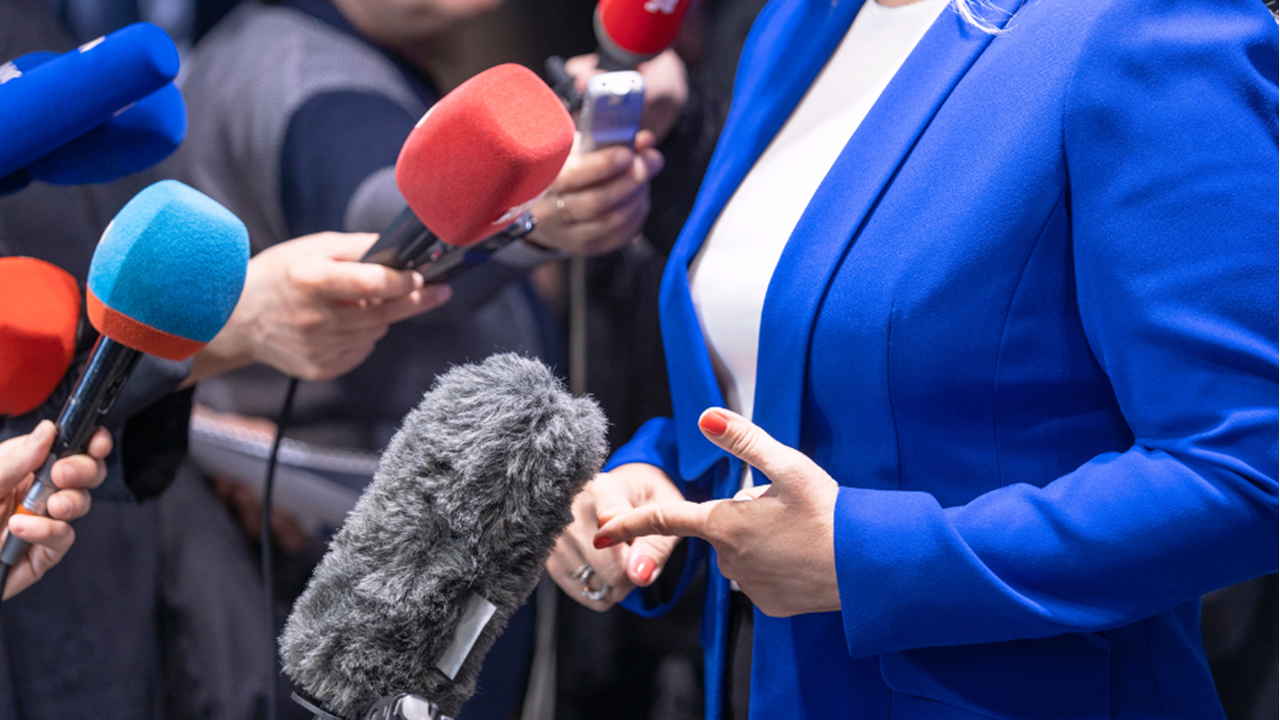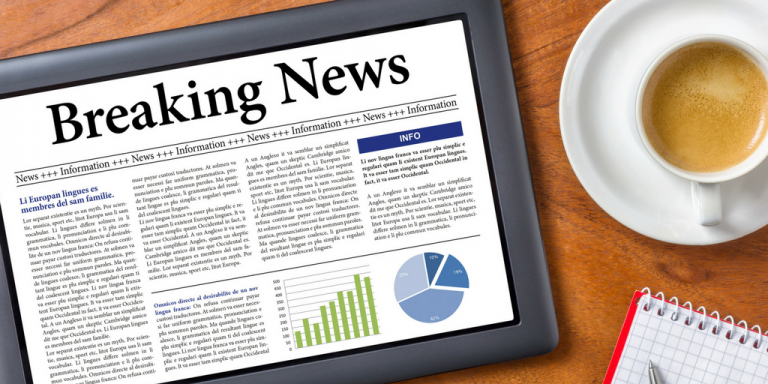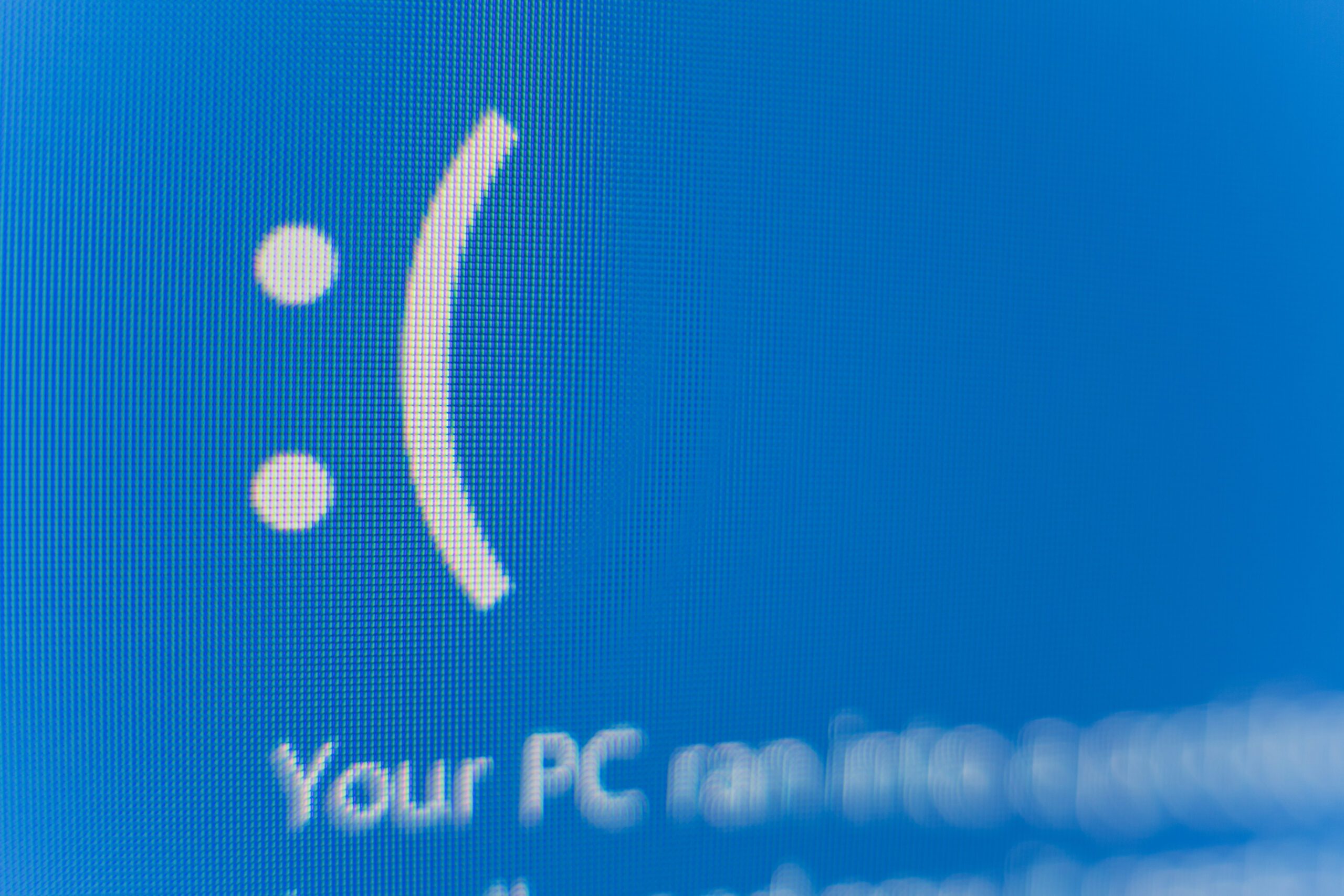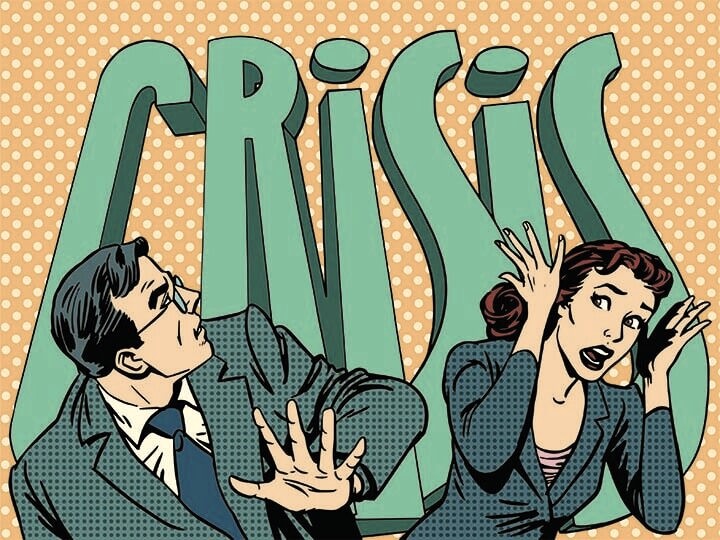
Building your brand awareness takes time, especially if you rely on earned media to reach your audience. But you can optimize your public relations by integrating the PESO model into your communications strategy, which will help increase your reach to key stakeholders. This model showcases how your target audience receives information through multiple channels and why it’s necessary to get your brand messages in front of them.
What is the PESO Model?
The PESO model is a PR strategy that uses integrative communications to maximize audience reach efficiently and effectively. According to Gini Dietrich, author of Spin Sucks, each media type works independently and interlinks with the others. The idea of aligning content across platforms will allow you to reach your target audience more effectively through multiple connection points, ultimately expanding your communications reach.
Why is the PESO Model Important?
The PESO model is important because it gives communicators multiple avenues for reaching their audience, allowing them to rely on more than just earned media coverage. Utilizing more than one channel boosts your content and amplifies your message. By incorporating this model into your communications strategy, you can set goals to inform, inspire, build relationships with, and influence your audience.
Implementing this model not only offers several channels for sharing content but also provides means to measure your communications efforts and prove the value of your work.
How to Use the PESO Model in Communications
When considering how you can use the PESO model to accelerate your communications strategy, it is essential to consider your company’s objectives, your target audience, and what your competitors are doing. This insight will help you to determine which channels are best for sharing your message and what your target audience looks for on those channels.
Here is how you can use each facet of the PESO Model in your communications:
Paid Media
Paid media can help promote your brand messages by placing your content directly in front of your target audience. It includes sponsored content, advertising, paid search results, and sponsorships, but it doesn’t have to break your budget. Start by testing various types of paid content to determine which avenues have the greatest return for your brand.
Earned Media
Earned media is crucial to boosting your brand awareness. Creating newsworthy content, connecting with influencers, and understanding your target audience is vital to gaining earned coverage. Building relationships with your industry bloggers, influencers, and journalists who could share your brand messages will help them become familiar with your company and the value it offers your shared audience.
As you generate earned media coverage, your team can measure message pull-through to determine whether your brand values and messages have been communicated effectively. Then you can establish a strategy for future campaigns using knowledge of what did and did not work.
Shared Media
Shared media refers to content on any social media platform. It is an important tool for building brand awareness and allows you to create a sense of community around your brand.
For the best results, research each platform to see which ones work for your industry and target audience. Keep in mind that each platform features unique content types and favors specific methods of sharing. You will want to tailor the frequency of your posts, the format of your content, and even the time of day you share to each platform’s algorithm to effectively engage its audience.
After researching social platform best practices, you can start experimenting with content and testing the results.
Owned Media
Owned media is any content or platforms you have direct control over, including websites, newsletters, press releases, blogs, and social media channels. These media assets allow your team to take control of your brand narrative and produce content highlighting your key messages. When done right, owned media can even generate earned and shared media coverage.
Evaluate Your PESO Strategy
Once you implement the PESO Model, you can measure its effectiveness with media analytics. By identifying trends in your media coverage and evaluating metrics such as key message penetration, social engagement, and press release pick-up, you can refine your application of the PESO Model to improve your strategy going forward.
Using the PESO Model for Better Communications
Using the PESO Model will allow you to optimize your communications and boost your brand. By integrating the four media types, your team can establish consistent and authentic messaging that has a greater impact on your audience.
At PublicRelay, we provide highly accurate and nuanced media analytics with our hybrid approach using human expertise and advanced technology. We can help you identify communications trends and best practices, measure and benchmark your progress, and prove your impact, so you can more effectively reach your target audience and your communications goals. Click here to learn more!
Written by: Ilze Santare, Benchmark Analyst at PublicRelay
Related Resources


In a world where PR campaigns compete to gain audience attention, using the right media outlet to access your target audience is vital. Once it is clear who your target audience is in terms of demographics – age, gender, location, etc. – you must learn how and where that audience consumes media and how best you can access them.
What is Targeted Media in PR?
Targeted media in PR is the list of media outlets or contacts you plan to direct your pitches to. The ideal target media includes those that will allow you to reach your audience with credibility and authenticity. Outlet or platform types (e.g., traditional print media, social media, broadcast, and digital media), individual publications, authors or journalists, and social influencers are all essential components of your targeted media list.
Why is Targeted Media in PR Important?
Targeted media in PR is important because coverage in the correct outlets can help your messages cut through the noise and engage your target audience. It will, in turn, help deliver your message directly to your audience and will assist in achieving your individual PR campaign goals.
How to Identify Your Targeted Media in PR
Identifying the correct media type will ensure that your messages reach your audience efficiently. Here are the steps you can take to determine the right media for your PR campaigns:
Determine Your Target Audience
The simplest way to determine your target audience is by breaking down a large group according to various demographics such as age, gender, disposable income, location, etc. Discovering your audience through social media and community groups can help you better understand who they are and how they engage with your organization or media content in general. Further, actively researching the media type your target audience engages with will help you to refine your targeted media list.
Establish the Goal of Your Content
Once you’ve pinpointed your target audience, you can evaluate outlets and media through the lens of what you want your PR to achieve. If your goal is to improve your brand awareness, focus on the media types that can support that, such as national publications with sizeable general audiences. Alternatively, let’s say your PR goal is to mobilize an audience to act by voting in a local election or donating to a cause, for example. This may be more effectively achieved through smaller localized publications or specific interest media outlets.
Research Media Contacts
Researching outlets and authors will provide valuable insights into the publications most suited to your PR campaign. Compile a list of metrics – covered topics, competitor coverage, and social media engagement – on each prospective outlet and journalist. PublicRelay, through extensive media research, has a database of outlets, authors, and influencers who comment on topics relevant to your industry. An in-depth database with details on relevant media contacts and capabilities for filtering by location, outlet size, reach, etc., can help you build a targeted media list that is adaptable to each PR campaign.
Compile a Targeted Media List
As mentioned by Forbes, you don’t necessarily have to limit yourself to one specific media source, and using a combination of outlets is often highly valuable. Your sources may include local or national newspapers, radio, trade, or technical magazines with a specific interest, local bloggers who are consumers of your product or service, and social media platforms where your audience can actively engage with your campaign.
Finding the right outlets to add to your list can be obtained by looking through previous press releases and researching what your competitors are doing and who they are engaging with their content on social media. A media list should be adaptive and will change over time, which will help you home in on the correct outlet at the right time, which can eventually build brand awareness on a local, national, or international level.
Build Relationships with Media Contacts
Establishing relationships with your media contacts will help you generate more earned coverage with less effort over time. According to LinkedIn, a positive step in creating such a relationship would be to develop a rapport before formally pitching to a potential media partner. By creating friendly relationships with journalists interested in your field and offering them content opportunities, they will begin to view you as a valuable resource. Most importantly, targeting the right journalists from the outset of a PR campaign will make your efforts at relationship building appear more authentic and set you up for long-term connections with authors interested in reporting on your industry.
Test and Measure
Once your campaign is up and running you can begin to assess its impact through several metrics such as tone, the volume of earned media content, and social engagement. Having analytics available to provide insights on sentiment, reach, and social engagement will allow you to assess your brand’s impact on your audience. Further, analyzing how the media discusses your brand against your messaging will help you to understand your message pull-through and, ultimately, the effectiveness of your targeted media list.
In addition to measuring the success of your campaign, media analytics will also highlight opportunities to create influencer partnerships and relationships with journalists who covered your brand or industry favorably.
Create Your Targeted Media List with Precision
Having great content that’s interesting and newsworthy is wasted if it doesn’t reach your target audience. The key to getting high-value earned coverage lies in targeting the right media sources that have effectively tapped into your audience. By choosing the outlets and journalists most appropriate to your PR campaigns, you can boost your brand’s visibility and improve its reputation.
PublicRelay can provide advanced insights on the outlets and journalists writing favorably about the topics and companies important to your brand, and provide data that can help you compile your ideal targeted media list. Click here to learn more!
Related Resources


In today’s busy 24-hour news cycle, it’s essential to have a media presence and ensure that your coverage is high-quality. In other words, are your brand messages represented in your earned coverage and by outlets that reach your target audience?
But knowing which campaigns successfully generated high-quality coverage can feel like it’s up to chance. That’s why it’s important to measure the impact of your campaigns using message pull-through, so you can determine the effectiveness of your PR work and identify the communications methods that successfully cut through the noise.
What Is Message Pull-Through?
Message pull-through is when your PR campaign key messages appear in your earned coverage, indicating that it successfully resonated with the media. For example, if you are consistently promoting the sustainability of your brand and an article uses your language or touches on the same key points to describe your company, you’ve achieved message pull-through. In short, it is the through-line that shows the effectiveness of a PR and communications team via earned media coverage.
Why Is Message Pull-Through Important?
Message pull-through is important because it is a measure of your PR team’s effectiveness in promoting the values and messages your brand wants to be known for. It also means your messages are more likely to reach your target audience and boost brand awareness. Measuring the impact of your campaigns is also necessary to demonstrate a return on investment to company executives. Not only can this metric demonstrate your campaign’s effectiveness, but it can also inform your strategy for future campaigns based on what worked and what didn’t.
How to Measure Message Pull-Through
According to Invoca, message pull-through is fundamental to understanding your brand awareness and sentiment. This is because it showcases the volume with which your company is mentioned using your preferred language as well as the quality of the outlets discussing you.
To measure message pull-through, you must analyze your earned media coverage in relation to your campaign. Essential metrics include the media’s use of your brand’s language, outlet audience and reach, and the sentiment expressed when discussing your brand.
Here are the core steps for measuring your message pull-through:
Identify Your Key Messages
You must first identify your key messages, which are the main points you want your target audience to remember about your brand. For communications teams, key messages go beyond the “what” and the “how” of what you do and include your company’s values, desired reputation, and the other elements that make you different from competitors. According to Forbes, you should pick three messages per campaign and track coverage for adherence to the key points and tone. They can be concrete or conceptual, which is why human analysis is crucial to effective media measurement of your message penetration.
Implement a Media Measurement Program
Once your key messages are established, you must set up the proper tools to measure their pull-through. With comprehensive media analytics, you can measure how an outlet discusses your brand and if it is in language that aligns with the message your team put out, as well as the tone of that coverage. Start measuring your media coverage before you launch your campaign to gather benchmark data. This allows you to compare the quality of your coverage before and after the campaign to demonstrate its impact.
Launch Your Messaging Campaign
Create your campaign, publish a press release, and reach out to your media contacts. Once your campaign is launched, your team can begin to measure its performance and analyze your coverage. When assessing press pick-up of your campaign, consider any commentary, opinions, or third-party perspectives journalists add to their coverage of your brand. It’s also important to note outlet reach and the article’s social media sharing, as this clues your team into how many people are receiving and engaging with your messaging.
Analyze Your Results
At the end of your campaign period, assess your media coverage by examining the volume of content for each key message, its sentiment, and social sharing by tone.
Be sure to dive into the authors and outlets that covered your key messages, with insights on the tone, outlet reach, and social engagement. Next, compare your results with the benchmark data collected before you launched your campaign.
In addition to determining whether your messages successfully penetrated your media coverage, these insights can also highlight opportunities for influencer partnerships with journalists that favorably covered your brand and accurately interpreted your key messages.
Increase Your Message Pull-Through
Effectively communicating your company’s brand messages is essential to reputation management and promoting brand awareness. Message pull-through is an often overlooked but important tool for analyzing the success of your PR team’s campaigns in breaking through earned media coverage with your messages.
At PublicRelay, we use human-augmented technology to accurately measure your earned media coverage for the metrics that demonstrate the impact and value of your communications.
Click here to learn more!
Related Resources


The value of competitive intelligence extends beyond informing strategic business operations. PR teams can also benefit from knowing how competitors perform by tracking their earned media coverage.
By including competitive intelligence in your media measurement program, your team can access crucial insights into your industry’s PR landscape and a deeper understanding of your own communications performance.
What is Competitive Intelligence?
Competitive intelligence is the practice of collecting and analyzing data on your competitors to inform your PR strategy. In communications, it requires tracking competitors’ earned media coverage using meaningful metrics that provide insight into various aspects of their strategies and performance. This data is then used to paint a complete picture of the competitive landscape your team operates within.
Why Is Competitive Intelligence Important?
Competitive intelligence is important because it allows you to benchmark your performance against industry peers. In addition to comparative analysis, it enables you to learn from competitors’ strategies, especially when it comes to their handling of communications crises.
You can also use this data to learn what stories and topics gain the most social traction, as well as identify opportunities in your market.
How to Use Competitive Intelligence to Inform Your PR Strategy
Once you’ve identified your key competitors and started measuring their media coverage, you can begin to analyze the data against your own to generate insights that can guide your communications going forward.
Here are a few ways you can use competitive intelligence to inform your PR strategy:
Benchmark Your Performance Against Peers
Benchmarking will help you to understand your performance in relation to peers and evaluate your progress over time. Collecting data on your competitors allows you to compare your communications on a variety of metrics. There are four metrics you can use as a starting point to conduct a benchmark analysis: Article Volume and Tone, Social Sharing, Share of Voice, and Key Message Penetration.
Article Volume and Tone
Measuring Article Volume and Tone is the simplest way to get a big picture insight into your competitors’ general brand awareness and sentiment as portrayed by the media. The tone of competitors’ coverage will reveal the brands that have generated the highest proportion of positive coverage, indicating that theirs are the strategies to learn from. Keep in mind that accurately evaluating tone is a challenge for AI-only media measurement tools, which is why we use human-augmented AI for reliable sentiment analysis.
Social Sharing
Social Sharing reveals which companies your audience is most engaged with. And, when analyzed alongside other metrics, like Tone or Key Message Penetration, it exposes the reach of that content. Consider Social Sharing a sign of the effectiveness of competitors’ coverage in resonating with your audience, for better or worse.
Share of Voice
How much attention is your brand receiving compared to your competitors? Which of your competitors dominates the media coverage relevant to your brand? Measuring Share of Voice is a broad indicator of brand awareness and your position within your market. This metric is useful for benchmarking your progress in increasing your company’s dominance in the industry conversation over time.
Key Message Penetration
While tracking the number of times your company was mentioned relative to competitors can show you who is leading your industry conversation, you can go deeper into the value of those mentions by measuring Key Message Penetration. In other words, how many of those media mentions reflect one of the core messages your brand wants to be known for? Not only will it show how effective peers’ messaging campaigns are, but you can learn from the outlets, authors, and strategies that give them the most success.
Identify Influencer Opportunities
Are there any journalists or publications that mention competitors often and favorably but aren’t covering your company? Do any of these authors generate outsized social sharing among your target audience?
Analyzing influencer data as a part of your competitor tracking will highlight the sources of their positive coverage and identify opportunities for your team to build relationships with industry influencers.
Learn From Competitor Crises
There is a lot you can learn from how your competitors handle communications crises relevant to your industry.
For instance, was their response proactive or reactive? Which messages resonated the most with your shared audience via social sharing? Which influencers covered their response positively? Negatively?
Analyzing their strategies in response to crises and the results will provide you with evidence-based recommendations in the event a similar crisis targets your company.
Use Predictive Analytics to Dominate the Conversation
A fully optimized media analytics program will not only allow you to learn from competitors’ past performance but will also help you to predict their future communications.
Using our predictive solutions, you can anticipate the messages your competitors plan to focus on in the coming weeks and the journalists they intend to target with that messaging. With this data, you can get a leg up on the narrative and dominate the conversations your competitors are vying for.
Strengthen Your PR Strategy with Competitive Intelligence
An in-depth understanding of your competitive landscape will help you develop a strong PR strategy. Detailed information on your competitors’ communications will highlight what works and what doesn’t with your shared audiences. Further, by benchmarking your communications performance against peers, you can identify opportunities for growth and measure your progress over time. PublicRelay supports your communications with advanced media analytics using a hybrid approach of cutting-edge technology and human analysts. Click here to learn more about how our solutions can help you to track your competitors!
Related Resources


Press releases are an important tool for public relations professionals when communicating with the media. They allow PR teams to share company news, take positions on important issues and events, and manage their company brand. There are multiple types of press statements designed to suit various situations, each with a different tone and motivation.
What is a Press Release?
A press release is a brief news story, official statement, or announcement written by a PR professional on behalf of a company and distributed to the media. They generally adhere to a specific format, are written in the third person, and address the who/what/when/where/why of a story. According to The Balance, their primary purpose is to publicize something significant and specific in a straightforward and concise manner. Each announcement should be newsworthy and pique the interest of the press while containing all the essential information a journalist needs to produce a story. A successful press statement will achieve three marketing and publicity objectives:
- Inform the media of a critical event or development, with the hopes that it will be widely publicized.
- Distribute noteworthy company news to the press so that journalists can broadcast stories to a wider audience.
- Promote your company’s unique brand and online presence through blogs, websites, and social media.
In short, a good story will earn media coverage and attract your stakeholders’ and target audience’s attention.
Why are Press Releases Important?
Press releases are important because they can increase your company’s brand awareness, improve your media relations, and build consumer trust.
Disseminating company statements to the press can boost your brand awareness by promoting your key messages across a wider range of outlets, thus reaching a larger audience.
Further, as the value of online marketing grows, press releases offer new advantages.
Although they may be considered outdated in a world with social media, Forbes Magazine explains that press statements are an important component of your PR strategy, even if they don’t get much media pickup. Considering “SEO and which keywords and search terms you want people to use to find you,” when drafting your statement will work to drive organic traffic to your website.
They are also an invaluable tool for improving your media relations. As you develop relationships with key members of the press, they may come to trust your brand and provide you with more coverage as a result.
Finally, press releases are important to building consumer trust. Even in the event of a PR crisis, releases provide companies with the opportunity to be transparent with their target audience. Because authenticity is at the core of consumer trust – a key driver of consumers’ purchasing decisions – using press statements to address both positive and negative company news alike will increase your credibility among your target audience.
Types of Press Release
Understanding the different types of press releases and under what circumstances to use them will maximize media pickup and impact. When drafting your statement, consider the target audience and stakeholders affected by the story, and how you can best incorporate the relevant key messages your company wishes to promote.
Five common types are:
- Product Launch
- Event
- New hire
- Partnership
- Crisis management
Product Launch
New product announcements are beneficial in creating awareness and excitement around a new product or service. These should be written with your target audience in mind. Highlight any modern features and how it’s an improvement from existing products of its kind. Announcing the exciting aspects of a new product allows you to set the tone and establish a unique brand that sets you apart from your competitors. Effective product announcements not only increase brand awareness but can also increase product sales and influence the success of a new product launch. Furthermore, it can result in earned media coverage and, in the case of product launch coverage, cost-efficient advertising.
Event
Promotion, promotion, promotion. The goal of this type of announcement is to inform members of the public of an event you are hosting, attending, or sponsoring. Additionally, it must entice members of the media to attend and cover your event to raise brand recognition. Essentially, it acts as an invitation to the media, stakeholders, or even potential consumers, depending on the occasion. Along with the logistics, your release should offer a compelling incentive to draw people to the event. Will the event raise money for charity or benefit the local community? Will attendees have the opportunity to win something, get the first look at a new product or feature, or be offered exclusive deals? Emphasizing the value of an event is what drives attendance and media coverage.
New Hire
A new hire announcement can act as a formal notification to customers, investors, and the public of a new member of staff. Generally, these are reserved for executive or leadership hires, particularly those who could be considered a ‘big win’ for company stakeholders. To ensure a new hire is newsworthy, consider how they strengthen your industry position. Incorporate engaging information on what makes this person stand out among other candidates, such as their work history, accomplishments, or unique qualifications. Moreover, demonstrate how they will assist your company to achieve specific goals, like developing an inclusion program or reducing your carbon footprint. Use this as an opportunity to reinforce your company values and explain how this new hire demonstrates your commitment to living up to them.
Partnership
Partnerships allow your company to amalgamate your customer base with another organization. Use your public statement announcing the partnership to appeal to both audiences and highlight your companies’ shared values and the positive outcomes of the alliance. Setting expectations and outlining any changes the partnership may mean for your company can eliminate any fears that may arise among stakeholders, particularly employees. Communicate the reasons behind the decision, what will be changing, and why your company and consumers should be enthusiastic about it. Explain what challenges this relationship will address and how it will help the brand’s growth, such as through product diversification or access to emerging technology. A successful statement should reassure the target audience that this collaboration will be a success.
Crisis management
Press releases can be an effective form of reputation management during a PR crisis. They provide an opportunity to issue an official company statement on the situation and get ahead of the story. Ensure you outline what happened, take responsibility for your role, and explain how your company plans to provide redress to those affected. The tone of your statement and method of recourse will depend on the nature of the crisis and how much responsibility the company wants to bear for the situation. Transparency via an official company stance halts further speculation and ensures people can look to your organization as a trustworthy source of information. Ultimately, defining the crisis and outlining a roadmap for mitigation will help to restore stakeholder faith in your brand.
Measuring the Success of a Press Release
From building brand awareness to increasing consumer trust, effective press releases can have a measurable influence on your company’s corporate reputation. Media monitoring allows PR teams to measure press pickup and evaluate their impact.
At PublicRelay, we offer bespoke media monitoring programs designed to help your public relations team understand and reach your communications goals. Build your custom media monitoring program now!
Related Resources


Earned media is an essential tool for PR teams to build consumer trust. This type of media has provided PR professionals with new and innovative ways to interact with and engage their audiences, making it an asset to any public relations skillset.
In today’s market, PR teams must understand how this form of coverage can be used to boost a company’s brand and be willing to invest in a communications strategy that has earned media coverage at its core.
With more people using social media to receive daily content and read the news, the nature of reaching audiences and generating media exposure is changing. So, what is earned media and how can you increase this valuable form of content?
What is Earned Media Coverage?
Earned media coverage is any material written about your company that you haven’t paid for or created yourself. In other words, it is any publicity or press coverage that is gained organically. This can include social shares of your paid media, customer reviews, and social posts, blogs, or news articles that mention your company.
Paid Media vs. Earned Media vs. Owned Media
There are three common forms of media coverage companies can invest in: paid, earned, and owned.
According to Smart Insights, paid media is content that is solely generated by the company, while owned media is content generated by the company in channels that it controls. Each type is an effective way for PR teams to engage their audience.
What sets earned media apart is the fact that it is not directly generated or paid for by the company.
Why is Earned Media Coverage Important?
Earned media coverage is important because it plays a pivotal role in engaging your audience, and it has the potential to reach a much wider audience previously unknown to the brand.
Building an earned media strategy is valuable because of its perceived trustworthiness relative to other forms of media coverage, as people are more likely to purchase or use services based on the advice of sources that are not directly connected to a company. Because it comes from an objective external source, it is more likely to be listened to and trusted by potential customers.
It is also more cost-effective than paid media as it is created by third parties unassociated with the company’s press or communications teams.
An organic earned media strategy is also an effective way for companies to build relationships with journalists, media outlets, social media creators, and influencers.
Not to mention, tracking earned coverage – in combination with other metrics such as social sharing and potential impressions – can be used to evaluate and provide insights into key message campaigns.
Ways to Maximize Earned Media Coverage
In this interconnected and online world, there are many ways for communications and PR teams to gain earned media coverage. While the nature of media has evolved with the rise of online outlets and social media influencers, there are a few trusted methods that can be used to increase your earned media.
Do Something Newsworthy
One of the best ways to attract organic coverage is to do something noteworthy or of interest to the public. This can range from philanthropic donations – which has proven to be a successful PR strategy for many organizations during the COVID-19 pandemic – to advocating for a worthy cause, like diversity and inclusion in the workplace. If your company can do something notable, it will likely attract positive news coverage and social engagement.
Create Content Worth Sharing
Creating ‘shareable’ content will increase the likelihood that you’ll gain social engagement with and positive coverage of your owned media. To create content worth sharing, it is important to understand the topics and formats that will resonate with your audience. The most shareable content is often in the form of video clips, infographics, or commentary on trending industry topics.
Partner with Industry Influencers
Partnering with industry influencers to promote your messaging is a key tactic for gaining positive earned media coverage. Take the time to build relationships with industry professionals and journalists that commonly cover your sector. In addition to gaining insight into the topics that resonate with your audience, you will increase the reach of your messages by taking advantage of influencers’ followings.
Utilize Social Media
Both large and small brands rely on customer reviews and word-of-mouth to build their media exposure. Not only has social media become a primary platform for customer reviews and word-of-mouth coverage, but it also allows you to engage directly with your audience. By building a social media team to promote shareable content and interact with your audience, you can boost your shared coverage and shape conversations about your brand.
Understand Your Target Audience
Understanding your audience requires that your PR team be aware of topics and trends that can be used to engage your audience. PR teams can use sentiment analysis to understand how their audience currently views their company and various industry topics. Once you understand how to reach your audience and how they engage with content, you can create content and campaigns that will generate higher rates of social sharing.
Using Earned Media Coverage as a Part of Your PR Strategy
Earned media coverage is an essential part of a successful public relations strategy. By refining your message, engaging your audience with creative content, and collaborating with industry influencers, you can increase your earned media coverage. Doing so will provide your company with valuable insight into your audience’s perceptions of your company and allow your organization to expand its reach to new realms.
At PublicRelay, we offer clients an accurate in-depth analysis of their media coverage. With media monitoring, we can help you to track all forms of your media coverage and assess the effectiveness of your messaging campaigns. Demonstrate the success of your communications strategy and start tracking your earned media now!
Related Resources


Social media is commonly viewed as a platform where companies can actively reach out to their audiences, build relationships, and manage their brand. With approximately 500 million tweets sent per day – the level of activity on one platform alone – the wealth of data available can also be used to inform and demonstrate the impact of PR teams’ communications strategies.
However, with the overwhelming volume of content, it can be difficult for PR teams to make sense of their media coverage to the extent that they can apply those insights to their communications approach.
What is the Difference Between Social Media Monitoring and Social Media Listening?
The main difference between social media monitoring and social media listening is that monitoring requires collecting and interacting with brand mentions on a granular level, while listening involves observing the “big-picture” of coverage over time. Both are approaches to measuring and analyzing a company’s media coverage.
In other words, monitoring allows you to assess engagement with your traditional media coverage on a micro-level. This is helpful when responding to potential communications crises in real-time and determining whether negative news coverage warrants a response based on its social traction.
Social media listening, on the other hand, refers to the analysis of your social media coverage over time and its interaction with your traditional media on a macro-level. During this stage, the data collected via monitoring is aggregated and analyzed based on company-specific objectives to translate them into actionable insights. This process is valuable because it enables PR teams to become predictive in their response to media coverage and to build more strategic messaging campaigns based on data.
An effective communications strategy incorporates both methods. Listening, however, stands to provide your team with data that can inform your communications approach on a larger scale.
Why is Social Media Listening Important in Communications?
Social media listening is important in communications because measuring engagement in relation to your traditional media coverage can yield valuable insights into your communications team’s effectiveness. Analyzing social media data can illuminate brand awareness and sentiment, the impact of messaging campaigns, and the industry topics that are likely to gain the most traction with target audiences.
Create a Social Media Listening Plan
To ensure your team is getting the most out of your listening process, consider the following advice for setting measurable objectives and determining the necessary metrics to track.
Setting Objectives
The communications objectives you establish will guide the design of your social media monitoring program which forms the foundation for later analysis during the social media listening stage. Begin by setting your objectives and determining the metrics that will allow you to measure them effectively from the outset.
While it’s difficult to measure social engagement’s direct impact on sales, per se, you can evaluate communications objectives such as improving brand awareness and sentiment, or increasing key message penetration, for example.
By establishing measurable objectives to assess the impact of your communications strategy, you can tailor your monitoring program to ensure you are collecting the necessary data to measure your objectives accurately and reliably.
Frequently tracked metrics include but are not limited to:
- The volume of company mentions across social platforms.
- Engagement (e.g., number of tweets, retweets, shares, comments, or likes).
- The tone of traditional coverage shared on social media.
- Influencer metrics (e.g., number of followers).
Key Message Penetration
According to CommPRO, “message penetration indicates the prevalence of [key] messages, a quantitative measure, across all possible messages.”
The listening process can help your team measure message penetration by distilling the volume of social engagement with your key messages from your total social media coverage. These metrics can work as an indicator of whether your messages are reaching and resonating with your audience.
Brand Awareness and Sentiment
Monitoring brand mentions across social media can serve as a benchmark against which you can evaluate your brand awareness relative to competitors, and the impact of your campaigns over time.
However, the frequency of your company mentions doesn’t necessarily shed a light on your overall reputation.
Dive deeper into your brand analysis by assessing the sentiment of the traditional coverage that drives engagement with your target audience. We know that when it comes to social media, coverage is seldom neutral. With sentiment analysis, you can determine whether each company mention that garners audience engagement is positive, neutral, or negative. This can be further broken down by topic and reputational driver for a more nuanced understanding of your brand.
Identify Trends
Identifying trends can inform your campaigns and enable you to invest resources in industry topics that are proven to have a higher ROI when it comes to social traction.
For this reason, tracking competitor coverage and industry topics across social platforms can be just as valuable as tracking your own.
By applying a similar measurement strategy to your competitors’ coverage, you can analyze their media campaigns to determine the topics that reliably trend across social media and garner positive engagement and brand sentiment.
Integrate Social Media Listening into Your Communications Strategy
Once you begin generating insights, there are multiple ways to apply them to your communications strategy.
Reach Target Audience
With an understanding of the topics, platforms, outlets, and influencers that have tapped your target audience, you can more effectively reach that demographic with your messaging.
Comprehensive data will answer vital questions such as:
- Does your audience demonstrate more engagement with your industry on Twitter, Facebook, LinkedIn, or Pinterest?
- On which platforms are your competitors garnering the most positive engagement?
- Which outlets or authors have positively covered your key messages and received high levels of social engagement?
- Which topics and messages are resonating most with your audience across social media platforms?
Reliable information on your target audience’s social media behavior will enable you to capitalize on the factors that drive positive engagement.
Pinpoint Key Influencers
Social media listening highlights the outlets and authors that cover your industry and gain the most traction with your target audience.
Build and leverage influencer partnerships based on proven histories of engagement and rapport with your audience to further propagate your message when promoting pickup of press releases and positive company news.
Build Data-Driven Campaigns
With social media intelligence, you can build data-driven campaigns designed to generate engagement across platforms and reach your communications objectives. A macro perspective of your social media data facilitates tailored messaging based on emerging trends, crisis response informed by historical data, and the ability to leverage industry influencers.
These insights will enable your team to evaluate the success of your existing strategies, benchmark your performance against competitors’, and adjust your strategy based on reliable data.
A Smarter Approach to Traditional Media
By using social media listening to understand your company’s traditional media coverage, you can improve the effectiveness of your communications strategies.
At PublicRelay, we can uncover the interaction between your traditional and social media coverage with our combined approach of human analysis and AI tools. Our team provides in-depth analyses of the topics, influencers, and outlets that drive social sharing to help you understand trends across multiple media channels and to leverage each for maximum impact.
Turn your social media data into social media intelligence now!
Related Resources


Media analytics are essential to helping public relations and communications professionals understand how well their current strategies are working and plot the path towards future success. By implementing an analytics solution, your team can more efficiently develop strategies based on data-driven insights to help you achieve your objectives.
According to the PRSA, the purpose of public relations is to forge positive relationships between organizations and their target audiences. These relationships can be developed in multiple ways: by gaining exposure to new audiences, building brand awareness among current audiences, and fostering engagement within less active audiences, to name a few. However, the various methods for building relationships with stakeholders are most effective when PR practitioners use reliable data to inform their strategies.
When explaining the importance of data utilization in the public relations industry, Keyana Corliss, Head of Global Corporate Communications at Databricks, said, “data can be the difference between assuming you’ve made a good decision and having a great data-driven strategy.” Of course, to employ this method, you must first understand what analytics are and how to use them.
What is Media Analytics?
Media analytics are observations and recommendations based on data drawn from media monitoring. Succinctly, media monitoring is the tracking of media output from various outlets and authors to gain a better understanding of a company’s brand and its communications strategies’ effectiveness.
At PublicRelay, we aggregate data collected from various media sources over time to pinpoint trends and outliers that provide key insights. These data points allow us to inform our clients of how well their communications tactics are performing and ways they may adapt their strategies to better reach their objectives.
Integrating Media Analytics into Your Public Relations Strategy
Public relations teams can be best served by incorporating media analytics into their operations strategically. You can apply an analytical lens to your own media data and make the most of the information you collect by keeping a few key principles in mind.
Be Objective-Oriented
While it is always important to keep goals in mind when making PR decisions, analyzing media requires clear, measurable objectives. Without objectives, there is nothing to differentiate a media campaign’s success from its failure. The act of establishing objectives also debunks the myth that PR efforts and outcomes cannot be measured. Further, when presenting PR outcomes in terms of accomplished objectives, PR teams can demonstrate the merit of their work, as well as prove the value of their allocated budget.
Setting objectives can look very different from one organization to another: a consumer-focused company may want to reposition its brand, while a non-profit organization may seek to raise awareness of a cause it supports. Both objectives are measurable using media analytics. According to Hootesuite, you can establish effective objectives using the S.M.A.R.T. goal framework, which recommends setting goals that are specific, measurable, attainable, relevant, and timely.
Without objectives, your team is at risk of reaching the end of a campaign only to find yourselves overwhelmed by too much information that you struggle to make sense of. Or worse, you may find that you have been tracking the wrong data the whole time and don’t have the necessary information to assess your PR outcomes.
Big Picture: Observe How Trends Form Over Time
While you may be able to find some noteworthy media mentions if you analyze your media coverage daily, becoming too detail-oriented can pose challenges to PR and communications teams. Without taking a step back to view your data over a longer period of time, you will most likely be faced with information-overload and struggle to identify the most significant coverage.
By allowing trends to develop over time and analyzing your data on a monthly, quarterly, or yearly basis,
you can see how patterns form and highlight the most noteworthy coverage. High-level reporting helps to cut through the noise and gives clear insights into trends as well as outlier events, putting seemingly important media coverage into perspective. Stepping back to observe the bigger picture not only saves time and energy, but it also produces better results by directing attention toward the most important data points.
Small Picture: Pay Attention to the Details
The details of your media coverage are most important during the set-up stage of your media monitoring program and later on in the analytics process when looking for a sensible narrative of your coverage.
The decisions made about the media coverage your team wants to track – like whether stock reports are relevant, or the factors that make a company mention significant or insignificant; positive or negative – may seem inconsequential and laborious, but these choices will have a big impact on the data you end up with and the story they tell when you analyze your coverage. These details determined during the planning stage will affect the narrative of your media coverage down the road. Thus, it’s important to consider these choices in the beginning when you set up your analytics strategy to minimize future changes and to make long-term observations and period-to-period comparisons more accurate.
After you’ve zoomed out to view the big picture, you can zoom in on the information behind apparent trends. By identifying factors such as authors, outlets, sentiment, and potential impressions, you can validate, explain, or negate what the numbers may appear to be telling you. For instance, a spike in a certain topic on social media may automatically signal to you that many people are discussing your brand. However, further investigation could reveal that the content is coming from one user with very few followers, perhaps even a bot, and the “trend” is not worth mentioning to your executives. In instances such as this, examining the details can help you to identify the information that is important and worth acting upon.
Media Monitoring & Analytics
It is with the perspective of analysis that your media data takes on a comprehensible narrative and becomes a more useful tool than media monitoring alone. While media monitoring can provide up-to-date coverage of all media mentions and in-depth statistical information, going one step further and analyzing this data significantly increases your return on investment. Through analysis, you can organize your data to identify the coverage and trends that are important, as well as the changes you and your team can implement to increase the success of your communications strategies.
Path to Success
A good media analytics program has the ability to both explore the nitty-gritty details and recognize patterns and significant moments within a large data set. The objectives you set to define success at the beginning of your analytics journey will guide the entire process, and a program that recognizes the value of big picture and small picture perspectives will help you to build a comprehensive understanding of your media coverage. With a strong program in place, you can recognize the key data that can provide actionable insights and inform your team’s PR and communications decisions.
At PublicRelay, we offer media monitoring and analytics programs that help our clients to identify relevant media mentions and compile informative and thorough metrics-based reports. Turn your media monitoring into media intelligence now!
Related Resources


Media monitoring involves tracking the output of traditional, social, and broadcast media outlets and authors. While it can be utilized by countless groups – from political think tanks to PR executives – communications teams can use it to gain a better understanding of the effectiveness of their various strategies and campaigns. Media monitoring is more than simply searching for every single mention of a company over time; it is the compilation of relevant mentions based on personalized and structured search parameters. An effective strategy can highlight the most relevant content on a day-to-day basis, while also providing a structured breakdown of media coverage broken into predetermined categories, such as competitor stories and industry updates.
Why is Media Monitoring Important?
Media monitoring is important because it helps communications teams stay informed of relevant breaking news, the latest industry developments, communications crises, and their company’s representation in the media. Though strategies and objectives vary from company to company, a clearly focused approach can yield a more in-depth analysis. Amidst an abundance of media coverage, an effective monitoring strategy can cut through the noise and help home in on the most significant, most shared, and most widely syndicated pieces.
Its value can be applied to numerous company departments, with the potential to offer teams data-driven insights to guide their individual objectives.
For instance, immediate updates on company mentions can help PR and marketing teams respond to breaking news, while regular alerts and updates can inform crisis management strategies. Teams can also pinpoint widely shared stories and quickly identify the percentage of stories featuring quotes from company representatives. The more information a PR team has on hand, the easier it is it for them to implement an effective crisis response and track its success.
Keeping abreast of media coverage that mentions your company is vital, as is being informed of the latest industry news and updates. Marketing strategies can take advantage of hot industry topics that receive unprecedented levels of coverage and social engagement. By capitalizing on trending industry topics, you can increase your company’s mentions across key industry outlets.
Furthermore, monitoring enables sales teams to understand what has their competitors’ products attracting unrivaled media attention or scrutiny. Sales departments can capitalize on the insights gained from identifying the drivers of both positive and negative competitor media coverage related to products or services to further distinguish their brand from rivals’ in a meaningful way.
The ability to make informed decisions based on contextualized data analytics is the key benefit that links each of these departments. By pairing regular media updates with an understanding of the topics and circumstances that drive mentions, coverage, sentiment, and sharing, a strategic media plan can provide company-wide benefits.
Key Media Monitoring Metrics
The sheer volume of available metrics can make it difficult to distinguish the most significant from the least. While different metrics may appeal to various teams across a company, there are a few key metrics that can build a foundation to inform multiple business strategies.
Reputation Management
Charting the prevalence of specific topics over time yields one of the fundamental metrics that can provide crucial context to weekly, quarterly, or annual media coverage. While spikes in coverage may be caused by specific events, certain subtopics may be gaining more media coverage than others within these spikes. Tracking this data can aid communications teams in understanding the topics that garner the most media pickup and traction with their audiences.
For instance, perhaps articles about CEO comments drove Q2 coverage, or the second half of the year saw workplace-related discussions double. Tracking the volume and tone of reputational drivers can help communications teams to identify what drove company mentions, positive and negative sentiment, and social sharing, and provide useful information to guide their communications strategies going forward.
Competitive Intelligence
Using metrics to track your own campaigns and initiatives can help your communications team to understand both what went well and what they can improve upon. Tracking competitor coverage, on the other hand, can help communications teams to inform strategies to outmaneuver key competitors by distinguishing the good from the bad of their PR efforts.
Studying competitor media coverage will allow you to identify the drivers of competitors’ negative coverage, and to learn from the effectiveness of competitors’ media campaigns and crises response.
Messaging and Campaigns
Armed with media insights, communications teams can plan future media strategies, initiatives, and campaigns to boost their positive media coverage. This information can also highlight why past initiatives may not have succeeded. Media monitoring will also allow you to track and understand rates of press release pickup, and whether recent spokesperson quotes or executive interviews are driving coverage.
Likewise, when combined with sentiment metrics, teams can dive into understanding the specific drivers of both positive and negative coverage for a period relative to previous quarters. The success of new product launches can be tracked with both sentiment statistics and sharing figures. Pinpointing emerging trends and topical engagement can help communications teams plan future campaigns to improve social media engagement. By understanding how topics resonate with readers and influencers, you can develop an informed media campaign.
Influencers
When tracked correctly, influencer metrics are also highly informative to a communications strategy. A good media campaign will know which outlets and authors to target for maximum impact. For the best results, your team must be aware of both the experts in the field and the influencers that can capture your target audience, generate the most relevant coverage, and earn the most social engagement across relevant social platforms.
Likewise, diving into influencer metrics can provide clarity on coverage that may be receiving more social media momentum than normal, as well as recent coverage that is trending more negatively compared to previous weeks. Knowing which authors or outlets cover industry issues more critically than others, as well as those that do more to promote their work on social media platforms, can provide an important level of context to monitored media.
Insights into Data-Driven Strategies
Media monitoring can provide a wealth of benefits to communications teams, from regular updates of media mentions to in-depth statistical information based on coverage over time. Examining the factors that drive media coverage can help teams to make data-driven communications decisions. When employed correctly, media metrics can provide context to coverage trends, ultimately enabling communications teams to formulate successful strategies.
At PublicRelay, we offer media monitoring and analytics programs that help our clients to identify relevant media mentions and compile thorough metrics-based reports. Click here to turn your media monitoring into media intelligence!







